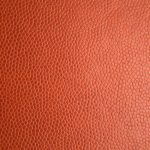Hey there, curious mind! Ever wondered if polyester is like a duck's back, repelling water effortlessly? You're in for a treat!
This ultimate guide will walk you through the ins and outs of polyester's water repellency. From unraveling its hydrophobic nature to exploring real-life applications, you'll master the factors influencing its water resistance and how to test and maintain its repellent properties.
No stone will be left unturned as you uncover alternatives to boost polyester's water repellency. So, get ready to dive into the world of water-repellent polyester and emerge with a deep understanding of its capabilities.
Let's embark on this journey and make polyester your go-to for staying dry!
Key Takeaways
- Polyester's water-repellent nature is a result of its fabric technology and the hydrophobic ester functional groups in its molecules.
- The tightness and structure of the weave, as well as finish treatments, can impact the water repellency of polyester.
- Regular testing and proper care, such as avoiding harsh chemicals and air drying, can help maintain the water resistance of polyester.
- Factors that enhance water resistance include tight weaves, hydrophobic coatings, durable water repellent finishes, and additional water-repellent treatments.
Understanding Polyester's Hydrophobic Nature
In this section, you'll learn why polyester is inherently hydrophobic and repels water. Polyester's water-repelling nature is a result of its fabric technology. The structure of polyester fibers creates a surface that naturally resists water penetration. When woven into clothing or gear, this property becomes highly beneficial for outdoor performance.
The hydrophobic nature of polyester is due to its molecular composition. The polyester molecules are made up of long chains with ester functional groups, which are hydrophobic. These chains repel water, making polyester fabrics water-resistant. This feature is particularly advantageous for outdoor activities where exposure to moisture is common.
Understanding this fabric technology can help you make informed choices when selecting outdoor performance gear. Polyester's hydrophobic nature means it can wick moisture away from the body, keeping you dry and comfortable during physical activities. Additionally, this water-repelling characteristic helps polyester fabrics dry quickly, making them ideal for outdoor adventures.
With this knowledge, you can confidently embrace the outdoors, knowing that your polyester clothing and gear will perform exceptionally in wet conditions.
Factors Affecting Polyester's Water Repellency
To understand the factors affecting polyester's water repellency, consider the weave and finish of the fabric. These elements play a significant role in determining how well polyester repels water and withstands environmental factors.
- Weave Structure: The tightness and structure of the weave impact how closely the polyester fibers are packed together. A tighter weave can enhance water repellency by reducing the spaces through which water can penetrate.
- Finish Treatment: The finish applied to polyester fabric can greatly influence its water repellency. Different chemical finishes can be added to the fabric to enhance its hydrophobic properties, making it more resistant to water penetration.
- Polyester's Chemical Composition and Environmental Impact: The chemical composition of polyester, particularly its hydrophobic nature, contributes to its water repellency. However, it's important to consider the environmental impact of these chemicals and processes, as some treatments may have adverse effects on the environment.
Understanding these factors can help you make informed decisions about the water repellency of polyester fabrics, taking into account both performance and environmental considerations.
Testing Polyester's Water Resistance
Want to find out if your polyester fabric is water repellent? Testing its water resistance can give you the answers you need.
We'll discuss how to test polyester's water repellency, the factors that affect its water resistance, and how to care for its water repellent properties.
Let's dive into the details!
Polyester's Water Repellency
You can test polyester's water resistance by conducting a simple water droplet test. Here's how:
- Observation: Place a few droplets of water on the polyester fabric and observe how the water behaves. Does it bead up and roll off the fabric, or does it get absorbed?
- Duration: Leave the water droplets on the fabric for a few seconds to see if they penetrate the material. This will help you understand the fabric's ability to repel water over time.
- Comparison: Compare the results with other fabrics or different areas of the same polyester fabric to see if there are variations in water repellency.
Polyester's chemical composition and advancements in water repellent technology play significant roles in determining its water repellency. Understanding these aspects can help you make informed decisions about using polyester in various applications.
Factors Affecting Water Resistance
Polyester's water resistance can be affected by various factors, including its weave, finish, and the presence of any water-repellent treatments. The weave of the fabric plays a crucial role in determining water resistance. Tight weaves, such as plain weaves or twills, are generally more resistant to water penetration. Additionally, the finish applied to the polyester, such as a hydrophobic coating or a durable water repellent (DWR) finish, can significantly enhance its water resistance. The presence of any water-repellent treatments further improves polyester's ability to repel water. Below is a table summarizing the factors affecting water resistance in polyester:
| Factors | Description | Impact on Water Resistance |
|---|---|---|
| Weave | Tight weaves (e.g., plain, twill) are more resistant to water penetration | Higher resistance to water |
| Finish | Hydrophobic coatings and DWR finishes enhance water resistance | Improved water repellency |
| Water-repellent Treatments | Additional treatments further enhance polyester's ability to repel water | Increased water resistance |
Understanding these factors is crucial for mastering the water resistance of polyester in clothing materials and staying abreast of textile technology.
Care for Water Resistance
To maintain the water resistance of polyester, regularly test the fabric's repellency using simple water droplet tests. Simply sprinkle a few drops of water onto the fabric's surface and observe if the water beads up and rolls off, indicating the water resistance is intact.
Additionally, consider the following care tips to ensure the longevity of the water resistance:
- Gentle Washing: Use a mild detergent and avoid harsh chemicals or bleach to prevent damaging the water repellent coating.
- Proper Drying Techniques: Air dry the polyester fabric or use a low-heat setting in the dryer to prevent high heat from affecting the water repellency.
- Fabric Treatment: Consider applying a specialized fabric treatment specifically designed for maintaining water resistance to rejuvenate the repellent properties.
Regular testing and proper care will help preserve the water resistance of your polyester garments and outdoor gear.
Maintaining Polyester's Water Repellent Properties
So, you want to keep your polyester clothing water repellent, huh?
Well, there are a few key points to consider.
First, it's crucial to wash your polyester without damaging its water repellent properties.
Secondly, you'll want to know how to effectively restore the water repellency when it starts to wear off.
Lastly, choosing the right detergent types can make a significant difference in maintaining the water repellent qualities of your polyester garments.
Washing Polyester Without Damage
Maintain polyester's water repellent properties by washing it gently and using a mild detergent. Here are some washing tips and drying techniques to help you preserve its water repellency:
- Gentle Washing: Turn the polyester garment inside out, use cold water, and opt for a gentle cycle to prevent damage to the fabric and maintain its water repellent properties.
- Mild Detergent: Use a mild detergent specifically designed for delicate fabrics to avoid stripping away the water repellent coating.
- Low Heat Drying: When drying polyester, use low heat in the dryer or air dry the garment to prevent the high heat from affecting the water repellent finish.
Following these washing tips and drying techniques will help you keep your polyester clothing water repellent and in top condition.
Restoring Water Repellency Effectively
You can effectively restore the water repellency of your polyester by applying a specialized fabric waterproofing treatment. When choosing the right treatment, look for products specifically designed for polyester fabrics.
Silicone-based waterproofing sprays are a popular choice, as they create a durable water-repellent barrier without altering the fabric's breathability. Before applying the treatment, make sure the fabric is clean and dry to ensure optimal absorption.
Follow the manufacturer's instructions for the best results. Additionally, long-term maintenance is essential for preserving polyester's water repellent properties. Regularly reapplying the waterproofing treatment, especially after washing the garment, will help maintain its effectiveness.
Choosing Suitable Detergent Types
Choosing the right detergent for washing your polyester is crucial for maintaining its water repellent properties.
When it comes to maintaining the water repellency of your polyester, choosing eco-friendly and biodegradable detergents is essential. These detergents are gentle on the fabric and help to preserve its water repellent coating.
Additionally, pre-treating stains before washing is important as it ensures that the detergent can effectively penetrate the fabric and remove any stubborn stains without compromising the water repellent properties of the polyester.
Alternatives to Enhance Polyester's Water Repellency
To enhance polyester's water repellency, consider applying a fluorocarbon-based treatment to the fabric. This treatment forms a protective barrier on the fabric, enhancing its durability and making it more resistant to water. However, if you're looking for more eco-friendly solutions, there are alternatives that can help enhance polyester's water repellency without relying on fluorocarbons.
Here's a comparison of some alternative treatments to enhance polyester's water repellency:
| Treatment Type | Durability |
|---|---|
| Silicone-based | High |
| Wax-based | Medium |
| Nano-coatings | High |
| Plant-based | Low |
| PFC-Free | Varies |
Silicone-based treatments offer high durability and water repellency, making them a popular choice. Wax-based treatments provide medium durability and water repellency, suitable for less harsh conditions. Nano-coatings offer high durability and water repellency, but they may not be entirely eco-friendly. Plant-based treatments offer low durability but are more environmentally friendly. PFC-Free treatments vary in durability and water repellency but are a good option for those looking to avoid fluorocarbons.
Consider these alternatives to find the best option for enhancing polyester's water repellency while meeting your durability and environmental preferences.
Real-Life Applications of Water-Repellent Polyester
Real-life outdoor enthusiasts often rely on water-repellent polyester clothing for its ability to keep them dry during rainy hikes or camping trips. The real-life applications of water-repellent polyester extend beyond just outdoor activities. Here are three ways you can benefit from its water-repellent properties:
- Everyday Wear: Water-repellent polyester jackets, pants, and accessories are perfect for everyday wear, especially in regions prone to sudden rain showers. They offer protection without sacrificing style or comfort.
- Sports and Fitness: Athletes and fitness enthusiasts appreciate the benefits of water-repellent polyester in activewear. Whether you're running, cycling, or practicing yoga outdoors, the fabric keeps moisture at bay, allowing you to focus on your performance.
- Professional Use: Many professionals, such as construction workers and field researchers, rely on water-repellent polyester clothing to stay dry and comfortable while working in challenging outdoor conditions.
While the benefits of water-repellent polyester are numerous, it's essential to be mindful of potential drawbacks, such as reduced breathability and environmental considerations. Nonetheless, the versatility and practicality of water-repellent polyester make it a valuable choice for various real-life applications.
Frequently Asked Questions
Can Polyester Be Made Water Repellent Through Any Natural Processes?
You can make polyester water repellent through natural alternatives like beeswax or plant-based treatments. These sustainable solutions enhance polyester's repellency without harmful chemicals, making it eco-friendly and effective for outdoor activities.
Are There Any Specific Environmental Concerns Related to Polyester's Water Repellency?
When it comes to the environmental impact of polyester's water repellency, there are concerns about the use of harmful chemicals. However, sustainable alternatives like recycled polyester and bio-based coatings are being developed to address these issues.
What Are the Most Common Mistakes People Make When Trying to Maintain Polyester's Water Repellent Properties?
When it comes to maintaining polyester's water repellent properties, common mistakes can include using harsh detergents and not reactivating the treatment. Proper maintenance involves gentle washing and using natural methods to enhance its properties.
Is There a Way to Enhance Polyester's Water Repellency Without Using Chemical Treatments?
To enhance polyester's water repellency without chemicals, explore sustainable alternatives like wax-based treatments or specialized detergents. These methods can boost durability and performance while minimizing environmental impact, offering a more eco-friendly approach to maintaining water resistance.
What Are the Limitations of Using Water-Repellent Polyester in Outdoor Gear and Clothing?
When it comes to water-repellent polyester in outdoor gear and clothing, there are some limitations to consider. Maintenance mistakes like using harsh detergents can reduce the fabric's water-repellent properties over time, requiring re-treatment.
- The Use of Nonwovens in Construction and Civil Engineering - July 11, 2025
- The Use of Nonwovens in Construction and Civil Engineering - July 11, 2025
- The Use of Nonwovens in Construction and Civil Engineering - July 11, 2025





